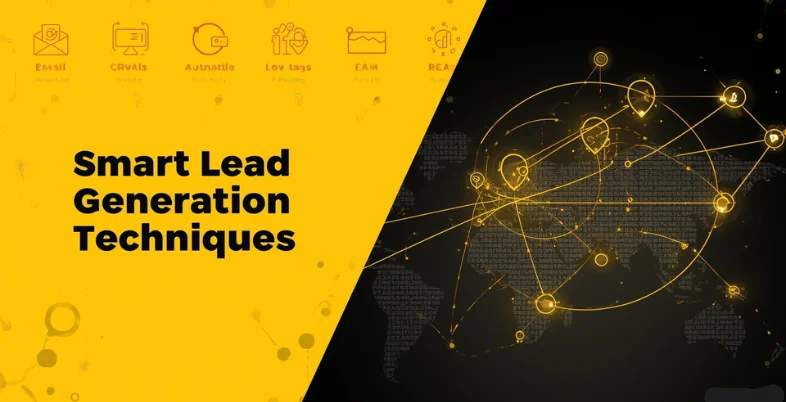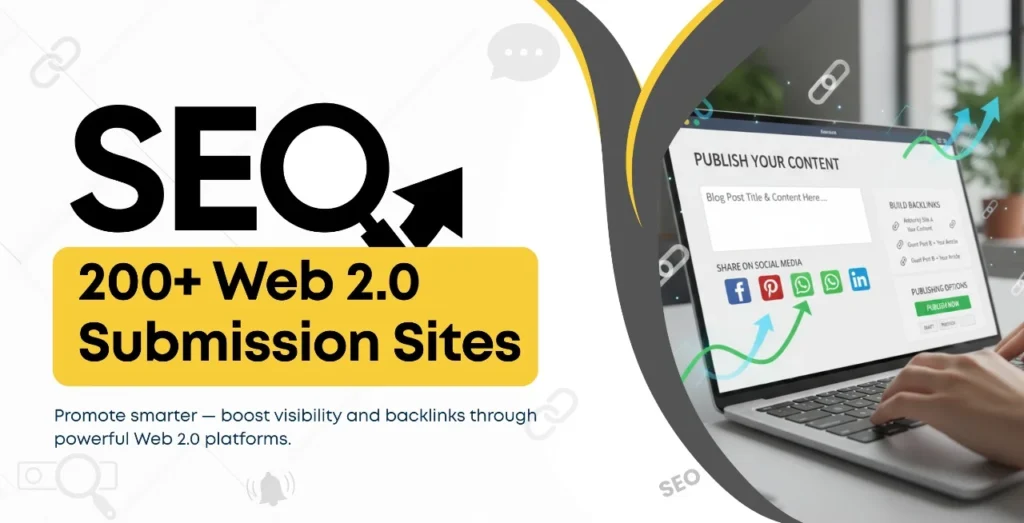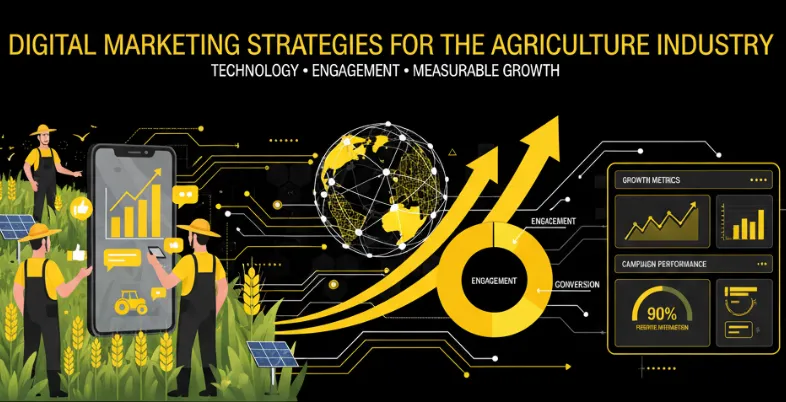YouTube is not just a video-sharing space but an opportunity driver for influencers, educators, marketers, and entrepreneurs. In 2025, launching a YouTube channel is more viable than ever since the platform has more than 2.7 billion monthly users around the world, and 122 million active users daily. No matter what your aim is (to make a strong personal brand, expand your company, or develop your content around your passion), YouTube will provide you with the platform and resources to reach considerable success.
However, in a platform as music, where millions of creators are active, it is not enough to upload several videos and become visible. It is strategic, creative, and systematic. Video planning and equipment, video SEO, and monetization are all a matter of knowing what to expect so your video project stands the test of time or becomes the foundation to a high-impact video channel.
To learn how to start a YouTube channel, follow along with this ultimate guide, in which we will take you through what you should know to start a YouTube channel completely fresh, whether it is creating your YouTube account and a content plan, or getting an audience.
The question is: Why YouTube in 2025?
But first, as a means of preface, why?
- Huge traffic: YouTube has a bigger audience than any cable channel, particularly among the 18-34 age group.
- Monetization Potential: YouTube has many monetization options, including AdSense, sponsors, membership, merch, and affiliates.
- Personal Branding: YouTube channels have gained popularity as a way to advance your brand in the business, freelancer, and student communities.
- Creative Freedom: You are free to explore your thoughts without gatekeepers, unlike the modern media.
- Search Engine Strength: YouTube videos tend to be featured in the search results and receive organic traffic, since the company is owned by Google.
Suggested Read: Small Business Ideas in Lucknow
Step- to-Step Guide for Starting a Youtube Channel
Step 1: Pick a Niche

The heart of your YouTube channel really comes down to its niche. This choice shapes who your target audience is, the style of your content, and how you plan to grow. Some popular niches that people love are:
- Gaming
- Vlogging
- Tech Reviews
- Educational Content
- Fitness and Health
- Investing and Finance
- Fashion/Beauty
- Travel
- Productive and Self-Development
Guidelines to select one niche:
Do what you love to do.
- Cross-check against demand: Is anybody seeking this theme?
- Competition analysis: Will you have something of a differential?
- Be consistent: You will not like it in 50 videos, will you?
Step 2: Strategy Preparation
A successful YouTube channel is based on an effective content strategy. It will help to consistently create value, stay organized, and cultivate a loyal following.
Define and know who your target audience is
First of all, determine who your ideal viewer is:
- What are their interests, needs, or pain points?
- What type of content already watched on YouTube?
- What lures them to get clicks and sticks on video?
Develop a viewer profile to define demographics, actions, and preferences. Offering the value to address such needs provides improved engagement and retention.
Specify Your Core Content Types
Find out what sort of videos you will be comfortable creating and can offer merit and value to your followers:
Tutorials and How-to Guides: Resolve a particular issue or provide instructions.
- Product Reviews & Unboxings: The contents guide the viewers into making the right purchases.
- Explainer Videos: simplify very difficult subjects.
- Q&A/ AMA: Encourage a personal interaction with your community.
- Listicles & Comparisons: Extend selected and edited knowledge and ranking.
Blend the content types to make your channel interesting to maintainable.
Complete Keyword and Topics Research
Find excellent video concepts using data-driven instruments:
- Google Trends: What is hot in your niche?
- TubeBuddy / VidIQ: Do search volume, competitor & ranking research.
- YouTube Autocomplete: Uncover high-rising questions on your topic.
Keyword research should target both low-competition and high-interest terms to increase the possibility of ranked positioning in search listings.
Construct a Content Calendar
Stick to it. Prepare a plan and organization of content schedule by means of the monthly calendar or a weekly one. This assists you:
- Be regular in uploads
- Make it seasonal or aligned to event popularity
- Do not carry out brainstorming at the eleventh hour
Begin with 5-10 video topics that bear out your key themes. The pre-planning increases the efficiency and provides time during filming, editing, and optimization.
Step 3 – Building your YouTube Channel
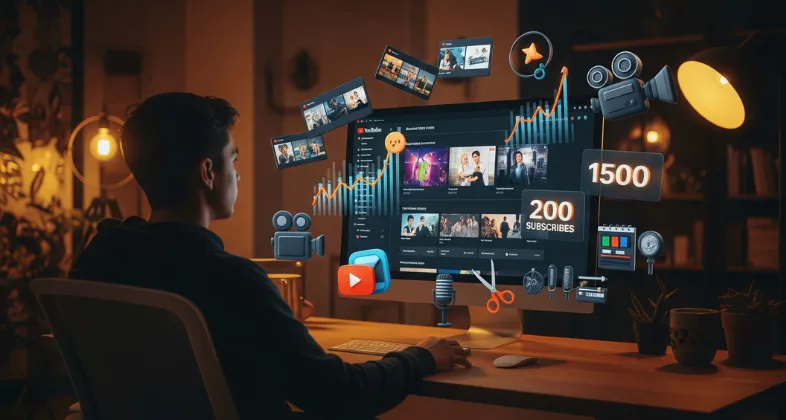
To create a channel:
- Log in to YouTube with Google.
- On top, on the right, there is your profile picture. When you click on it, choose to create a channel.
- Select the name of a channel. Brand it and make it niche-specific.
- Load a channel image and profile pic.
- Write a compelling channel description (include keywords).
- Add contact info and links (website, social media).
Step 4: Branding
Tonal and visual consistency earns trust and means that viewers know what you are about.
Branding Essentials:
- Channel Logo: Make it simple, scale-friendly, memorable.
- Banner art: Utilize Canva or Adobe Express to make your professional banner.
- Intro/Outro Templates: Customize your starting and ending of the video.
- Fonts & Colors: Stick to 1–2 fonts & 1 color palette.
And of course, don’t forget your channel trailer — a short video that introduces your content to first-time visitors.
Step 5: Shoot and edit your initial video
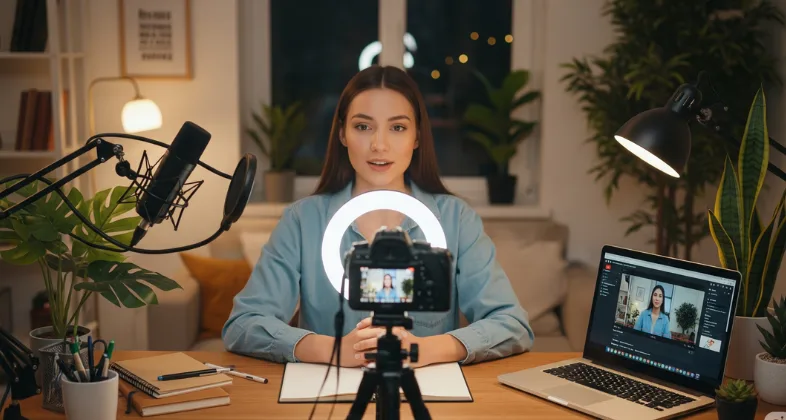
Filming Tips:
- Pick a clean, quiet place
- Apply the rule of thirds to yourself
- Make sure that you use natural sunlight or angle the lights at 45 45-degree angle
- Speak effectively and strongly
Editing Tips:
- Add jump cuts to eliminate gaps
- Use music and sound effects wisely (check for copyright)
- Use on-screen text, transitions, and B-roll to enhance watch time
- Optimize the flow of your video by adding interest every 510 seconds.
- For optimal quality and upload time balance, export in high definition (1080p).
Step 6: Build A Community
Avoid depending only on YouTube for recommending your videos.
Promotion Channels:
- Instagram Reels, TikTok, YouTube Shorts: Repurpose videos
- Facebook Groups: Publish your content in locations your followers FLOCK!
- Reddit and Quora: Add value and connect a channel to it
- Email Newsletter: Get started on Day 1
- Collaboration Projects: Collaboration between other small writers
Step 7: monetize your channel
As we have said before, when your channel gets traffic, you can begin making money with YouTube monetization options. Here’s how:
1. Join the YouTube Partner Program (YPP):
Requirements (as of 2025): 1,000 subscribers and 4,000 public watch hours in the last 12 months, or 10 million Shorts views in 90 days
Your application must be done through the YouTube Studio once you are eligible to do so.
2. Enable Monetization:
Open ads to receive money from your AdSense
3. Look at New Sources of Income:
- Channel Memberships: provide special benefits to subscribers who pay
- Super Chat & Super Stickers: Allows fans to pay when they stream
- Merch Shelf: Sell your products 4 your videos
- YouTube Premium Rogers: Make money receiving a change of fees from Premium paid subscribers viewing your channel
4. Brand Deals & Affiliate Marketing.
- Make sure to add affiliate links to your description so that you may get commission
- Once you have established authority, sell sponsored content with brands
It is not quick and easy to turn your channel into something that will provide you with some stable income, but consistency and proper strategy will work wonders.
Step 8: Diagnosis of Performance and Enhancement
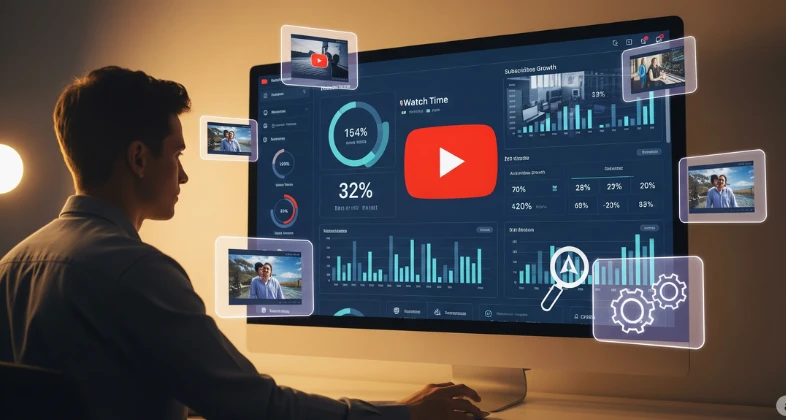
Your job is not over after uploading your videos. In order to expand your channel, you must learn what is going well and what is not. Assess key performance indicators in YouTube Analytics:
- Watch time: The duration of time that individuals watch your videos.
- Click-through rate (CTR): How often people click your video after seeing the thumbnail
- Retention: Where the audience is leaving your videos.
- Traffic: On which pages are your viewers arriving–Search, Suggested videos, external websites, etc.
- Subscriber growth: What kind of videos attract the most subscribers to you?
As you review these insights, you can take action to better your content strategy so you can grow your channel more effectively, whether it involves switching the topics in your videos, fixing your editing skills, or modifying your thumbnails.
Legal Tips for YouTube Creators (2025)
Use only your own or licensed content (videos, images, music); don’t use content you don’t have rights to.
- Avoid copyright issues: Always get permission or licenses, even for short clips.
- Respect privacy: Get consent to film people or private property; blur sensitive details.
- No defamation: Don’t post false or damaging statements about others.
- Be truthful: Don’t mislead with titles, thumbnails, or sponsored content; always disclose paid promotions.
- Trademark your brand: Register your channel/logo to protect against copycats.
- Originality required for monetization: Don’t upload mass-produced, repetitive, or pure AI content without significant changes.
- Follow YouTube’s rules: Violations can lead to strikes, demonetization, or channel bans.
- Keep proof of ownership: Save drafts and raw files to prove your work is original.
Long-Term Growth Tips
- Post Regularly: 1 2 videos/week
- Comments Engage: Nurture a brand faithful following
- Keep ahead of the Fashion: Utilise content that goes viral: Use trending narrative in your space.
- Invest in Learning: Subscribe to creator channels such as Think Media, Film Booth, and Cathrin Manning.
- Experiment: New formats to explore what connects.
Mistakes to avoid
- Going after the viral trends that do not have a niche
- Inconsistent uploads
- Ignoring SEO
- Failure to interact with your audience
- Being single-minded on subscribers rather than value
- Quitting too soon
Suggested Read: Invoicing Software for Small Businesses
Conclusion
Understanding how to start a YouTube channel in 2025 opens the door to endless possibilities for creativity, personal branding, and audience growth. Whether you aim to educate, entertain, inspire, or build a profitable online business, YouTube offers the tools and reach to make it happen. Every thriving creator once started with zero subscribers and a single video, proving that success comes from consistent effort, strategic planning, and a willingness to adapt.
Focus on creating valuable content for your niche, engage with your audience, and keep refining your skills with each upload. Don’t wait for the “perfect” time—start now, record your first video, and commit to posting regularly. The journey might be challenging, but with persistence, creativity, and smart strategies, you can grow a loyal community and achieve your goals. Your potential audience is already waiting—so take that first step today and bring your YouTube vision to life.
Frequently Asked Questions
1. Is it free to start a YouTube channel?
Yes, creating and managing a YouTube channel is free. You don’t need to pay any fees to set up a channel, upload videos, or engage viewers. However, you might incur costs if you invest in better video equipment, editing software, music licenses, or promotions.
2. What equipment do I need to start?
You can begin with basic equipment such as a smartphone or webcam, but for higher quality, consider getting a camera, microphone, tripod, and basic lighting. As your channel grows, you might upgrade to more professional results.
3. Can I use my personal Google account to create a channel?
Yes, but for business or group projects, it’s better to create a Brand Account. That lets multiple managers/admins handle the channel and keeps your content separate.
4. How do I choose a niche for my channel?
Pick a topic you are passionate about and that provides value to viewers—anything from vlogging, tutorials, gaming, travel, cooking, or fitness. Consider what makes you unique and research what’s trending or in demand within your interests.


